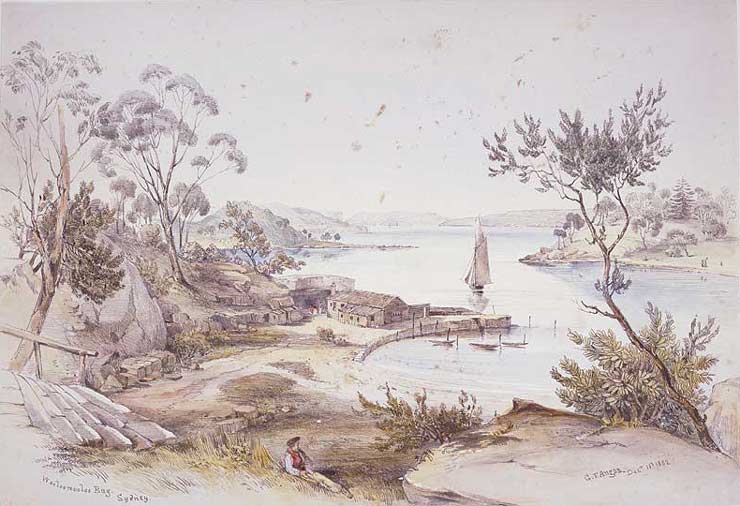Description
This is a pen-and-wash drawing by George French Angas (1822-86) of Woolloomooloo Bay, Sydney, dated 16 December 1852 (the title uses an alternative spelling). Looking north-east across Sydney Harbour towards the Heads, it is a scene only lightly touched by humans, with some wharf buildings in the middle ground, three dinghies moored nearby, and a small craft sailing out of the bay. A male figure reclines near some rocky steps in the foreground.
Educational value
- This asset provides an image of Woolloomooloo Bay, next to Farm Cove in Sydney, in the mid-19th century, before the merchant wharves were constructed on the south shore and the Garden Island naval base and docks were built on the eastern side.
- It refers to the Aboriginal word 'wooloomooloo' or 'woolloomooloo', which possibly means 'young kangaroo' - earlier, the bay was known by European settlers as Garden's Cove or Palmer's Cove, but by 1850 it had been given an Aboriginal name.
- It indicates the small size of the population of Sydney at the time, when an area so close to the city was relatively undeveloped - in the 1850s, Sydney's population was just over 50,000.
- It gives some indication of the natural vegetation of the southern shore of Sydney Harbour, with scattered red gums and banksias growing between rock slabs.
- It provides an example of the work of George French Angas - a member of the pioneer South Australian family, Angas was born in Newcastle upon Tyne in Britain, and studied drawing and lithography; he drew this sketch during his second period in Australia (1850-61), during which he worked as secretary to the Australian Museum in Sydney (1853-60).
- It shows the results of the popular 19th-century pen-and-wash art technique, by which original drawings were waterproof-Indian-inked, and then brush-washed with pale tinges of watercolour.
